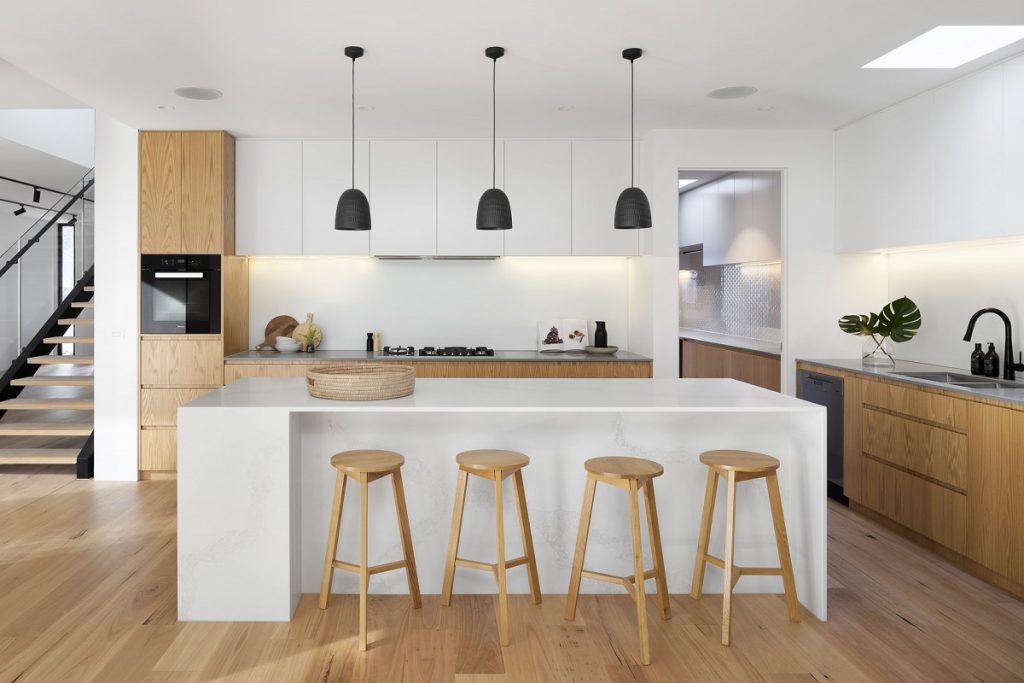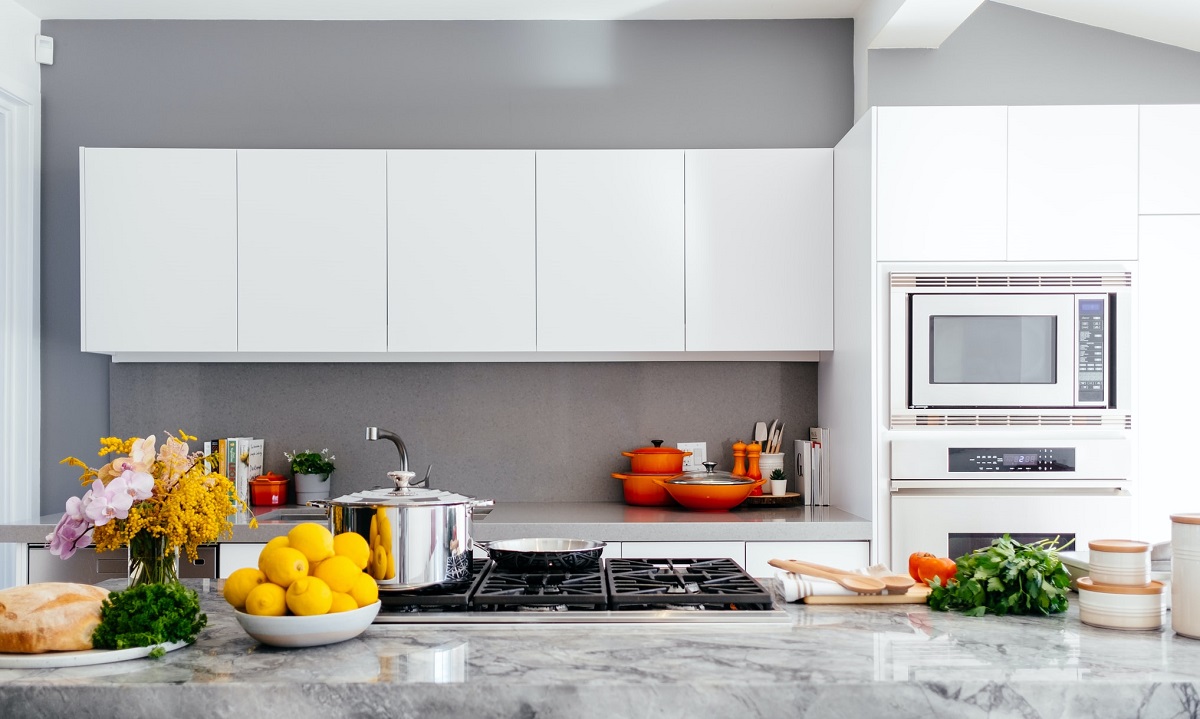The question of a properly selected interior has interested people since ancient times. We have survived the treatises of oriental scholars describing the art of competently building houses and choosing an internal setting, which is currently continuing in a number of whole areas of feng shui.
There are many factors in our modern busy life that have an impact on our health, but the influence of the interior on a person is difficult to overestimate.
Interior design has an effect on our state of mind and health. Therefore, you need to create an interior that will be comfortable and pleasant to live or work in and fill it with harmony and comfort.
Architect Le Corbusier, the founder of constructivism, came up with an interesting definition of human habitation: an ideal house should be a “machine for living”, where everything is convenient, optimally calculated, and helps to maximize the development of a person’s creative abilities.
There are many ways to achieve such an ideal, but the principle, on which they are based on, is one: the harmony of color, shape, and texture, which helps to modulate home in accordance with the person’s preferences.
Our ancestors who lived in caves did not know clear geometric forms. Only with the advent of a method of processing stone and wood, as well as with the invention of artificial building materials (such as bricks) the rooms have acquired the usual shape for us – a parallelepiped. These forms fit into our lives so much that they became the same for everyone.
Thanks to this unity of perception, the form turned out to be the defining element of the style. Now the style is not imposed by economic processes and policies. Individuality is fundamental: from hi-tech to simple country style, from classical to ethnic style.
Principles of A Harmonious Design
We can highlight the following principles of a harmonious compositional combination of forms and objects in the interior.
Simplicity
Simplicity makes it easier to understand. Familiar shapes and individual objects are easier to perceive if they are more clearly separated from the general background.
Separation by a geometric shape

So, objects of different shapes will look much better at distance from each other. If you put a round armchair and a square coffee table next to each other, then they will be perceived as a single composition.
Laws of symmetry
Interior elements, placed according to the laws of symmetry, are perceived as a single whole. Despite the fact that the form remains the basis of the interior, yet without texture and color, it will not be revived.
There is a rule that allows harmoniously combining color and shape. So, the more dynamic the interior, the brighter the colors should be in it, and vice versa. Another influence is also true: bright elements of a linear form on a calm background make the interior more active and mobile.
But the basic rules for the use of color and shape cannot be neglected. So, for example, pastel colors are better in the bedroom over bright, provocative colors. It is also important to consider the compatibility of colors and shades for a harmonious look.
To remove the boring walls, painted in monochromatic dull color, it is enough to add a vertical narrow strip, which will also increase the height. But too much of these stripes will make the interior defiant, unnecessarily colorful.
Dark outline enhances color effects, and separates and unites colors at the same time. But here you need to know when to stop — this hue is capable of both highlighting the advantages and highlights the disadvantages.
Psychological Impact of Colors
Next, we will look at the psychological impact of colors on a person.
White
Beneficial color. Means cleanliness and free space. A symbol of goodness and justice. Gives vigor, encourages action, concentrates attention on oneself. In large quantities, it is not recommended for the bedroom.
Black
Any color in combination with black becomes brighter and more expressive, but the abundance of this color in the interior is possible only if there is enough lighting. It is the color of emptiness and denial. Inspires sadness, but can take off fatigue. It is undesirable to get carried away with this color.
Brown
The brown color in the interior is best suited for furniture. Soothes and relieves fatigue, instills a sense of strength and goodness, stimulates the imagination. It is best used to energize the wealth zone.
Gray
Gray is calm and neutral, but in itself a little boring, so it is undesirable to use only it in the interior of a room or house. The color of practicality and prudence, caution and distrust.
Good for those who like to retire and stay in the shadows. Extinguishes tension, but can be boring.
Red
For many, this color is associated with wealth, luxury, and beauty. It tends to excite and cheer up. Very active color, means joy, fun, and passion, gives a person strength, stimulates and helps to show determination.
Orange
This color is liberating both physically and spiritually. It provides communication, creates a trusting atmosphere, and contributes to the harmonization of relations. Saturates with energy and cheers up, adds confidence, and stimulates the working process.
Yellow
Yellow is good for those who are active, adds vigor and optimism. A symbol of joy, harmony, and fun. It is considered a color antidepressant and helps brighten a gloomy mood.
Green
It has a calming effect, neutralizes aggressive emotions. Green is good for large and bright rooms.
Blue and light blue
Visually lighter shades of blue can increase the space, therefore, designers often choose them to decorate small spaces. Induces clear thinking, fights anxieties and fears, allows you to hear your inner voice and make the right decision.
Violet
It is believed to be the most mysterious color. In living quarters it is better to use its light tones since too dark shades of this color are tiresome. Helps to find harmony, develops compassion.
Pink
It is the color of care and love, soft, compassionate, sacrificial, and giving good. Reduces aggression, relaxes. It evokes a feeling of comfort, relieves obsessive thoughts, and helps during crisis.
Interior Design and Mental Health
Based on studies on the influence of interior design on the psycho emotional health of a person, we have derived some rules to be followed when designing an interior.
Rule 1. Use only environmentally friendly materials
The ecological cleanliness of the house is determined even at the construction stage. It is best to use materials that bring the house closer to the period of “cavemen”: wood, straw, unbaked clay, etc. Look for shops, like NY Furniture Outlets that sell furniture pieces made from ecological materials.
Natural stones of sedimentary origin are next in terms of environmental friendliness. Other materials – glass, metal, concrete, plastic, mixtures -it is needless even to talk about. Do not “dress up” your housing in the newest inventions of mankind. It will be better
to equip it with materials given to us by nature itself. There are such decorative stones that not only decorate the house but also have a positive effect on the human body.
Rule 2. Greening of interiors is the best doctor
Indoor plants have many benefits on one’s health. Basil, cardamom, and spathiphyllum have disinfecting effects. Geranium and lavender help get rid of headaches, normalize blood circulation. While plants such as fragrant dracaena and peperomia are good at taking toxic substances from the air.
Laurel and chlorophytum improve digestion; the latter additionally absorbs odors and purifies the air.
But almost all of these plants have more than just medicinal properties. A pleasant smell is another advantage of indoor plants and flowers. And of course, you need to remember about the “first aid kit“, which should be in every home. It includes aloe, which helps with inflammation, Kalanchoe, which helps relieve colds, and Callisia fragrans, relieving many diseases.
Rule 3. Things in the house must also be healing
We again go back to natural materials. Wicker baskets are better than padding polyester, it is better to change pillows to feathers, metal blinds to a wicker mat, and in textile decoration, it would be good to give preference to simple fabrics: linen, burlap, chintz.
Rule 4. The atmosphere of creativity
Surrounding your home with creativity affects your state of mind: napkins and pillowcases, hand-embroidered, hand-drawn pictures, collected bouquets of dried flowers, painted nesting dolls. Want a more serious hobby? Engage in art photography, processing stone, or wood carving.
Rule 5. Do no harm
This is perhaps the most important rule in apartment interior design. The harm from your interior can be no less than the harm from the wrong medication.
In order for your home to be comfortable, try to avoid sharp corners, dark and too bright colors, a large number of small or variegated parts, you should not install too many mirrors in the house, and it is also better to avoid sharply directed light that don’t really allow sufficient illumination in the rooms.
Your home interiors can do a lot to boost your mental and physical health–from the colors to choosing natural materials, to the overall aesthetics. So make some changes in your home for a safer and healthier living.




